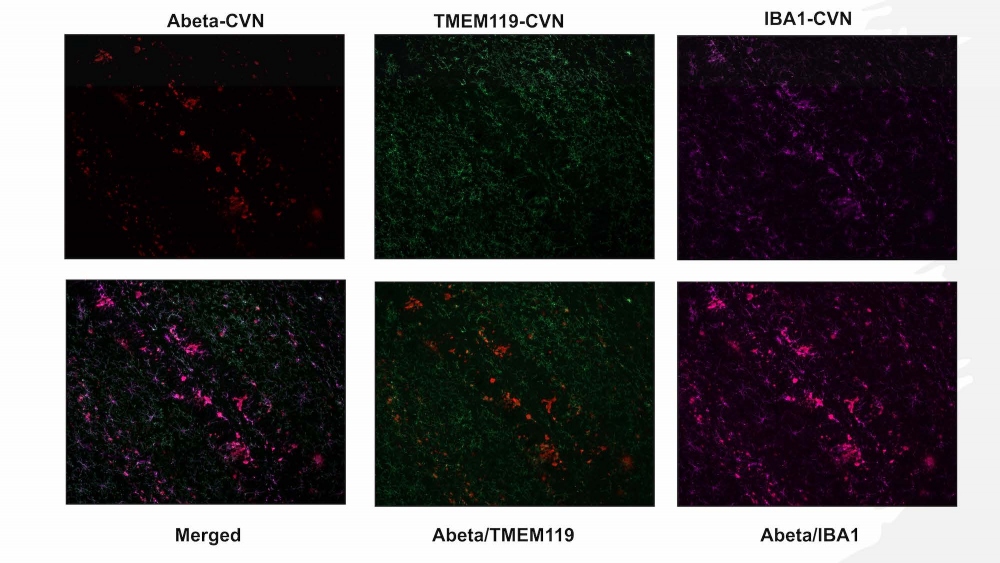
Female-led Team Investigates Increased Alzheimer’s Risk in Women

By Dana Adcock ’22

For Duke faculty members Christina Williams and Alexandra Badea, their research on Alzheimer’s disease feels deeply personal.
“I have seen what Alzheimer’s is like in the family, so I think I’m particularly fortunate to be able to contribute to Alzheimer’s research,” said Badea, an associate professor in radiology and neurology. “Even if this is just pushing the field forwards by half of a millimeter, I’m very grateful for this chance.”

Williams, who is a professor of psychology and neuroscience, agreed. “I’ve seen the effects of Alzheimer’s on real people, people I love and care about,” she noted. “Being able to actually do something, and as Alex said, moving the field forward, is something that we all feel anxious to do. Any little contribution we can make is one that we think is valuable.”
Faculty Partnership
The two researchers’ combined expertise in neuroscience and radiology has paired well together throughout the years.
“Alex and I came together in large part because we’re both interested in memory and in Alzheimer’s disease,” said Williams. “Alex is particularly interested in using imaging technology to look at the sizes of different things in the brains of mice, and also levels of activity and connectivity of brain circuits. She looks at the circuit and system level, whereas the work in my lab tends to look more specifically at individual cell types that are affected by Alzheimer’s disease in particular brain regions.”

Williams and Badea’s overarching goal is to combine their techniques to get at what is changing in the brain from Alzheimer’s. Along with that, they’re interested in how environmental factors, such as estrogen loss and exercise, alter the course of the disease.
For the past five years, they have led Bass Connections teams to involve undergraduate and graduate students in tackling this issue. Their current team, Alzheimer’s Disease: Exercise Therapy and Brain Networks, is focusing on the disease in women.
Investigating Risk Factors in Women
One of the things that’s lesser known about Alzheimer’s disease is that women are considerably more vulnerable.
“Two thirds of the patients with Alzheimer’s are women, and the disease progresses more rapidly in women,” said Williams. “Some of the symptoms are a little bit different in women than in men. The question of why women are more vulnerable is one of the questions that we’re interested in asking and trying to get answers to.”
The team uses mouse models to examine the impact of exercise and estrogen loss on Alzheimer’s disease. Some of the mouse models demonstrate familial Alzheimer's, which is the early onset type and genetically determined. Others mimic the later onset type, which is more common but has fewer known causes. They utilize technologies like fMRI scans and immunohistochemistry to visualize the progression of the disease in the mice’s brains.
Student Perspectives

Psychology & Neuroscience Ph.D. candidate Janai Williams (read her reflection) serves as the team’s project manager. Joining the project a year after its inception, she embraced the chance to learn from continuing members.
“I was able to build my knowledge from the undergraduates who are brilliant and have such great skills,” said Williams. “Once I got a stronghold of the project, the diverse knowledge and thought helped me build on my own questions within this project [and bring them into] what I’m planning to do for my future dissertation project and what I’ve presented for my thesis.”

Undergraduates work in subteams, tackling different aspects of the project. “My role in the project lies more within the exercise therapy aspect of the team,” Divya Reddy (Biology ’23) explained. Her subteam is “using mouse models to look at the effects of chronic exercise as opposed to sedentary mice or non-chronic exercise.”
Meanwhile, Eileen Wen (’24) is using immunohistochemistry to test whether the team’s menopause models actually are working effectively and whether they have categorized the mice into the right cycling or non-cycling female group.

The project team includes eight other undergraduate members: Akhil Bedapudi, Nikhil Gadiraju, Melinda Guo, Kyra Hoskin, Jasmine King, Pradnesh Kolluru, Anna MacFarlane and Isabella Pansini.
Despite focusing on different research areas, students say they still feel connected to the rest of the team. “With Bass Connections, the whole goal is to try and make sure that you always feel supported and feel like you’re in the know with everyone else’s project,” said Pansini (Neuroscience ’23). “It becomes easier to integrate everyone’s information and everyone’s project together because ultimately we are working toward the same goal.”
Looking Ahead
The team plans to analyze and compare brain imaging data from mouse models of Alzheimer’s disease to brain neuropathology, behavioral data and databases of human brain imaging from Alzheimer’s patients. Team members will contribute to publications and posters and present these to the research community and clinical consumers. They also hope to create a website to share their findings with the public.
Duke University senior Dana Adcock is a Bass Connections communications assistant who is majoring in Environmental Sciences & Policy.
Learn More
- Read Janai Williams' reflection on this experience.
- Explore the project team’s plans and approaches.
- Browse the Bass Connections 2020-2021 Annual Report.